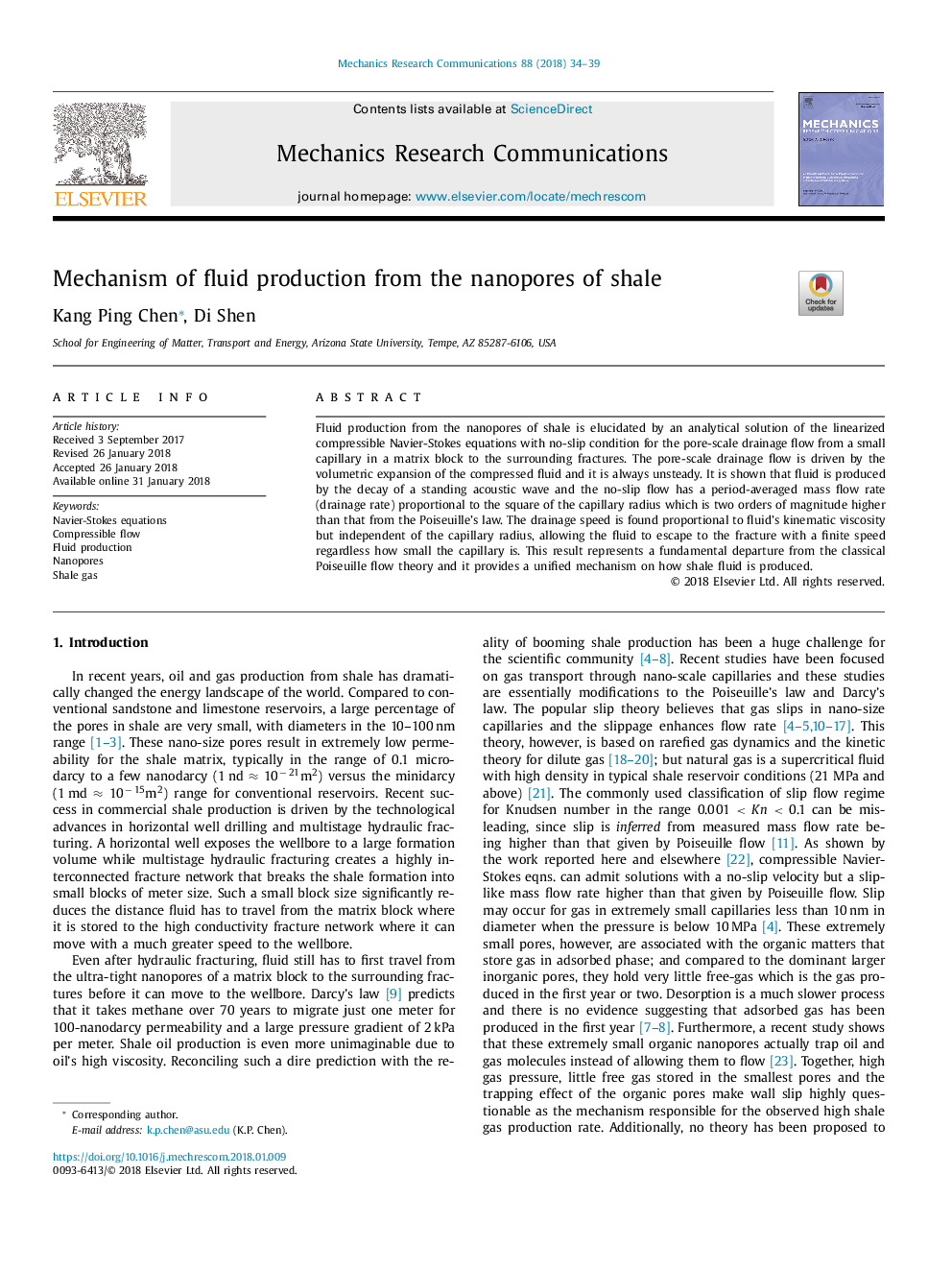| Article ID | Journal | Published Year | Pages | File Type |
|---|---|---|---|---|
| 7178782 | Mechanics Research Communications | 2018 | 6 Pages |
Abstract
Fluid production from the nanopores of shale is elucidated by an analytical solution of the linearized compressible Navier-Stokes equations with no-slip condition for the pore-scale drainage flow from a small capillary in a matrix block to the surrounding fractures. The pore-scale drainage flow is driven by the volumetric expansion of the compressed fluid and it is always unsteady. It is shown that fluid is produced by the decay of a standing acoustic wave and the no-slip flow has a period-averaged mass flow rate (drainage rate) proportional to the square of the capillary radius which is two orders of magnitude higher than that from the Poiseuille's law. The drainage speed is found proportional to fluid's kinematic viscosity but independent of the capillary radius, allowing the fluid to escape to the fracture with a finite speed regardless how small the capillary is. This result represents a fundamental departure from the classical Poiseuille flow theory and it provides a unified mechanism on how shale fluid is produced.
Related Topics
Physical Sciences and Engineering
Engineering
Mechanical Engineering
Authors
Kang Ping Chen, Di Shen,
